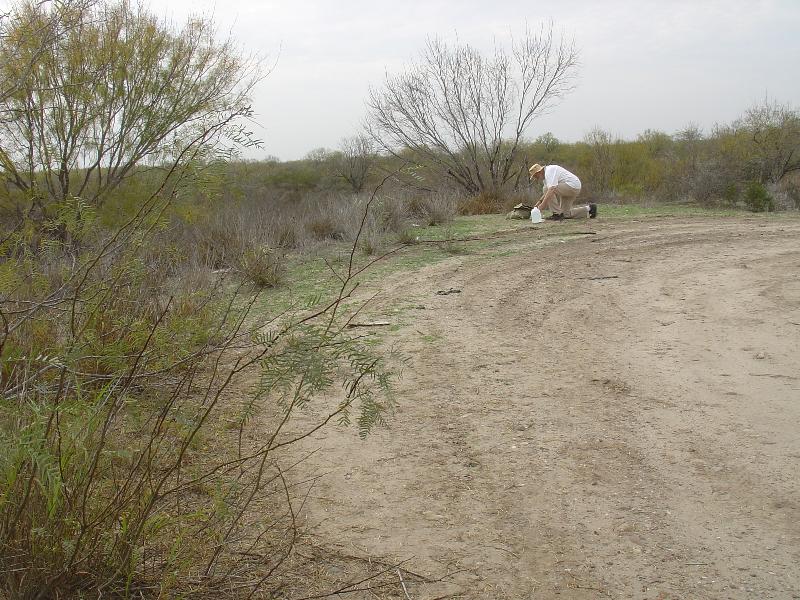

Most people will have been referred to this webpage from The Newbie Introduction because it appeared that they didn't have a lot of experience keeping tarantulas and needed a little nudge in the right direction.
It's also possible that an experienced enthusiast might be sent here as well. If that's your case, please don't be offended; this isn't intended as a slap in the face. It's very likely that sending you here for a little review was more efficient than spending forty-five minutes rewriting half this webpage on an Internet forum.
And, more often than not, we do this sort of thing to make sure all the bases were covered, and we're all reading from the same page. (And henceforth, we will try to avoid any more vapid metaphors.) Review is often a good thing.
This webpage is intended to warn the novice about some of the pitfalls and red herrings in the arachnoculture hobby rather than to act as one of those @#$% Internet care sheets.
Sadly, while there are many distinct exceptions to the rule, the majority of pet shops know almost as little (Or in rare cases even less!) about tarantula care than you do. And, until and unless you find a pet shop with personnel who really know tarantulas well, you should take everything they tell you with a hefty dose of distrust.
And, how will you know when you find a pet shop that really knows tarantulas well? Well, we'll be getting to that shortly.
 A baby (about third instar) Brachypelma albopilosum. Photo by Jonathon Smith, another of the photocontributors for TKG3. Way to go, Jonathon! Used with permission. |
ARE WE DOMESTICATED YET?Archeologists and anthropologists tell us that humans have been domesticating dogs for tens of thousands of years. We've also been domesticating sheep, goats, cattle, and a host more species for ten or fifteen thousand years. We've been keeping ornamental carp for several thousands of years, and tropical fish and orchids for a few hundreds of years. But, it comes as a big surprise to most arachnoculturists (that would be you!) that the hobby is less than SIXTY (60) YEARS old! This author can remember a time when only a very few, socially aberrant individuals, among them a Dr. William J. Baerg of the University of Kansas at Lawrence, kept them for any purpose, much less as pets. In 1958 Dr. Baerg published an 88 page book entitled The Tarantula in which he described what he knew about their biology and his experiences at keeping them in captivity. We mark that year as the beginning of the hobby of arachnoculture. The hobby is THAT new! Few appreciate that tarantulas were not regularly bred in captivity until the late 1980s after Brachypelma smithi was placed on the CITES Appendix II. And, most species weren't bred until much later than that. As a result, the average and maximal life spans of more than a few tarantulas are only guessed at because many of the earliest ones that we had bred in captivity are only now reaching the ends of their lives. The hobby is THAT new! Thus, while huge volumes have been known about dogs, cattle, and tropical fish for centuries, arachnoculturists are still experimenting with, and learning about tarantulas. And, the hobby and tarantula care is still advancing at an awe-inspiring pace. We're still on the "steep part of the curve." (Yikes! Another vapid metaphor! My bad.) and it appears that this exploratory phase will last for many years to come. And this would explain, though not excuse, the fact that so many care sheets are so obsolete. |
STILL CHUGGIN' ALONG!The Tarantula was replublished by Fitzgerald Publishing in the U.K. in 1997. Copies of the 1997 reprint are still commonly available from used book dealers on the Internet. And rarely, copies of Dr Baerg's original edition are also listed, but for a price! |
Be extremely careful about trusting too heavily the caresheets, Internet or otherwise, that you may find. Be aware that any charlatan can publish such a caresheet and many do. There are no rules or restrictions. And, there is little or no way of enforcing any responsibility on their authors if they result in a dead tarantula for you.
And, the majority of care sheets were written in the last century, AND NEVER UPDATED! So, as we progress in the art of tarantula care these care sheets become at first laughable, then tragic, then outright dangerous to your tarantula. (See the sidebar Are We Domesticated Yet?)
Because Internet care sheets are generally so bad and untrustworthy we've written an entire webpage to warn you away from them. Visit Care Sheets: The Mothers of All Myths.
Picking information from the Internet forums would be a good thing except that the information you get is usually haphazard, disjointed, and incomplete; or parrots the falsehoods discussed in Myths, Misconceptions, ...
Often, little or no reasoning or supporting logic is presented for advocating many of the recommended actions, and the novice will likely have no clue as to why they should perform these rituals, or what should be done if nothing happens or matters go terribly wrong.
Also, recommendations found on those forums are all too frequently contradictory, and the novice may have trouble "sorting out the wheat from the chaff!" (Oops! Another vapid metaphor! Sorry.) At that juncture, the novice has several courses of action.
We list here three of the more notable forums. Note that failure to mention your favorite forum is not to be construed as a damnation. Since we have limited space, we merely chose the three, most notable. If you want to review a much more complete list you may visit Quest for Knowledge - Tarantulas (scroll down the page). (And, we offer a hearty, "Thank you!" and a tip of the old hat to KJ Vezino for posting that incredible resource!)
The Search functions on the various Internet forums are a feature that is distressingly underused by most novices and many experienced enthusiasts alike. Perhaps 75% or more of the questions asked on those forums have already been answered several times before. The newbie is strongly urged to learn how to use this feature. Most forums have an instruction or FAQ page associated with their Search function, and those are a good place for the novice to start.
THE GREATEST VALUE OF THE INTERNET FORUMS is that they supply the novice with the most recent, state of the art information. But, make no mistake, the novice will still need the basic information from those printed books to build on.If you haven't done so already, you need to read one or more good books on tarantulas. Pay particular attention to the four books that are itemized below. Note that I didn't say you should go out and buy them! (Although you certainly can if you wish.) Get to know your friendly, neighborhood, public library instead. The chances are good that they have one or two of the titles on their shelves even as you read this. They can always get any of them you need either from another branch or through the Interlibrary Loan System. Some local area arachnid societies also have copies for loaning to their members.
In a perfect world you would read them in the order they are presented, do so if they are all available. If not, read them in any order you can. Just don't order all of them at once! There's far too much reading for the limited period of time that you can check them out. (For example, Breene's Quick and Easy Tarantula Care, only 64 pages long, will take less than an hour for most people to read. But, The Tarantula Keeper's Guide, 384 pages, may take a week or more of heavy reading to wade through!). One at a time is best in order to avoid serious brain damage!
The authors of all these books have taken special pains to present the information you need in a well organized fashion. It's much easier to understand the basic care philosophies, and many cross-correlations may be pointed out that you'd miss completely if you rely entirely on the Internet. While these books overlap somewhat in subject material, each offers a different perspective and background on tarantula care. We have found that it is important that you eventually read all four books to give you a well rounded foundation for caring for these most unconventional creatures. Besides, a little repetition of the more important points will help drill them into your brain a little better. (That's not a metaphor! That's a figure of speech!)
If you like what you see, they're available for sale "off the shelf" from many of the pet shops in your area, by special order from any bookstore (many of the larger ones may even have them in stock) and by order over the Internet from places like Abe Books, Alibris, Amazon Books, Barnes and Noble, BooksPrice and many, many more. Perform an Internet search using the keywords used book dealers, used book sellers, and used books for sale if you wish.
None of these books costs as much as a tarantula, but any one of them could save you an immense amount of stress, anxiety, wasted time, effort, and money on useless stuff and dangerous care practices, not to mention dead spiders.
We do not list the following books among the care books above because these books' primary message only deals with tarantula care peripherally. However, there is no question that these are important books in the hobby.
We propose a more complete list of books as the core of the enthusiast's home library here. And, if that isn't enough to whet your appetite, we might suggest perusing this bibliography.
Until you've had one or more tarantulas for a while, and learned a lot from others or your own sometimes tragic experiences, you won't be able to distinguish the difference between someone with adequate experience and knowledge from a complete nincompoop; or a trustworthy, knowledgeable pet shop from one that's merely blowing hot air. That's why we urge you so strongly to read the books listed here. After reading them you'll have some basis for making a judgement and protecting yourself and your newfound pet.
Pop quizzes daily, your little 8-legged Yoda will be giving you!
(Oh, I just LOVE doing this!)
Copyright © 2009, Stanley A. Schultz and Marguerite J. Schultz.
Select here for additional copyright information.
This page was initially created on 2009-June-14.
The last revision occurred on 2013-June-30.